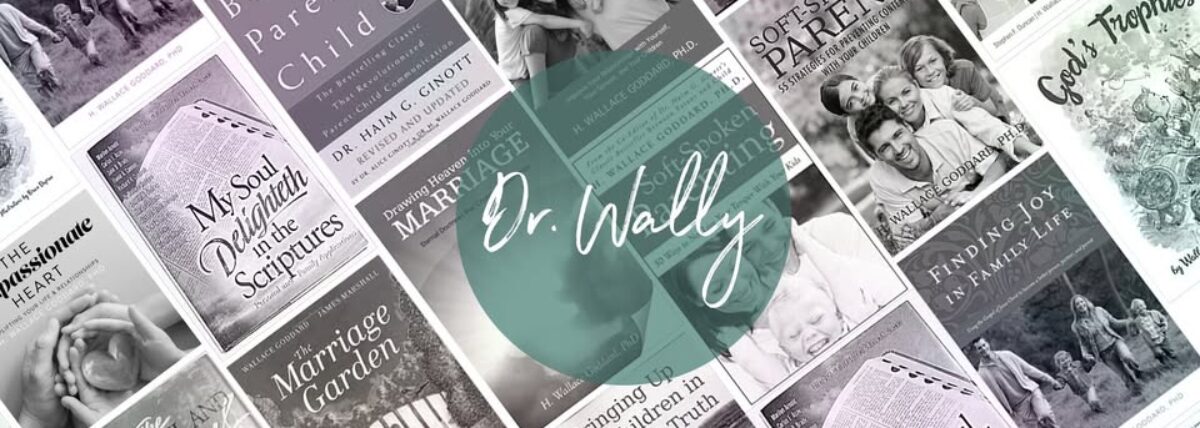Imagine that my wife Nancy has been in hard labor for hour after long hour through an entire night and most of the next day. I am by her side trying to comfort her. She is exhausted from relentless and inexpressible pain. Image that she groans, “I just don’t know if I can keep going.”
 Let’s imagine that I say, “I know just how you feel.”
Let’s imagine that I say, “I know just how you feel.”
Nancy would have every right to rise out of her bed and smite me.
I don’t know how she feels! My body has never experienced 14 hours of labor. And, even if it had, it would still diminish her current and painful experience if I redirected attention from the one in crisis to the experience of the one who is sitting comfortably at the side of her bed.
There is hardly a poorer way to show understanding or compassion than to say to someone in pain, “I know just how you feel.” That is equally true whether the pain is physical or emotional.
By the way, I did not say that to my wife. Unfortunately, when our firstborn was placed in my arms, I marveled! “Amazing! We need to have more children!” Those were not the words that Nancy was ready to hear immediately after hard labor. It is hard for us to think outside our own experience and fully enter someone else’s experience.
There are times when a dear one is suffering, and we want to offer words of comfort and compassion. What are the best ways of doing that?
Let’s start with INEFFECTIVE ways to show understanding. Many of our efforts to show compassion may have the opposite effect. They make a person feel mad or misunderstood. Following are some examples of things that we should not do:
• Don’t jump in and immediately give advice.
“Here are my thoughts on that…”
“What you need to do is . . ..”
“When something like that happens to me, here is what I do…”
• Don’t talk about your own feelings and experiences instead of theirs.
“I know just how you feel.”
“That same thing happened to me.”
“That’s nothing. You should hear what happened to me.”
“That just makes me so angry because…”
• Don’t make your spouse’s pain seem unimportant.
“I think you’re over-reacting.”
“Everything will seem better tomorrow.”
“That’s too bad…. Now I have something else we need to discuss.”
When people are in emotional pain, the first gift you can give them is the willingness to listen. Provide them a safe harbor in which to express whatever they want to share. Don’t interrupt with questions or opinions. Don’t immediately begin offering counsel. Avoid becoming distracted by planning what you are going to say when it is your turn to talk. Don’t become impatient and signal they are taking too long to share their experience.
While someone is struggling with emotional pain, that experience is very personal and very significant to them in that moment. They don’t feel anyone really understands. And they are right—even if you have listened carefully or been in similar circumstances, you can’t fully understand how the other person is feeling That’s why a person who is hurting would probably rather have you say, “I’m so sorry this is happening to you. I wish I could understand just how sad (or hurt or lonely) you feel.” Sometimes the best way to show understanding is to admit that you can’t understand exactly how they feel.
The key to understanding what the other person feels is identifying the person’s feeling. After we have listened and watched carefully to learn how a person is feeling, we might do and say one of the following EFFECTIVE things:
• Acknowledge or identify the person’s feeling.
“You feel strongly about this!”
“You seem to feel very (concerned, hurt, upset, confused, frustrated, lonely, sad).”
• Invite more discussion.
“I would like to understand how you are feeling. Will you tell me more?”
• Use active listening.
“Let me see if I understand. You feel like . . .? “
“It sounds like you feel (lonely, confused, sad, etc.).”
Effective compassion keeps the focus on the person in pain. It sets aside my own discomforts to minister to one who is suffering. When the good Samaritan was ministering to the wounded and half dead man, he did not say, “I know you’re in bad shape, but my bunions are killing me!” No! We set aside our discomforts to minister to those who are suffering.
All of this gets more complicated when both partners in a marriage are feeling hurt and distressed. When one person can set aside his or her pain to offer comfort, healing is advanced. But that is rare. When we feel attacked by another person, we tend to counter-attack. When a wife enumerates a husband’s faults, he is likely to respond in kind. Sometimes the best we can do when we are both in distress is to take time out. During that timeout, we are wise NOT to rehearse our own complaints but to try to understand our partner’s pain.
There are many times every day when our spouses express pain, dismay, or discouragement. When we regularly offer genuine compassion through the ordinary challenges of life and marriage, we build a bond of trust and love.
Invitation: Next time your partner expresses pain, pause your natural reactions. Turn your full attention to his or her distress. Offer words of understanding.
Recommendation: For an LDS perspective on marriage and compassion, read my Drawing Heaven into Your Marriage.
Thanks to Barbara Keil for her excellent additions to this article.
Examples of poor and good ways to show understanding are adapted from my publication, Being Understanding, written for the Alabama Cooperative Extension System.
